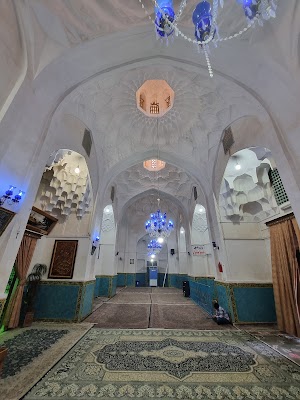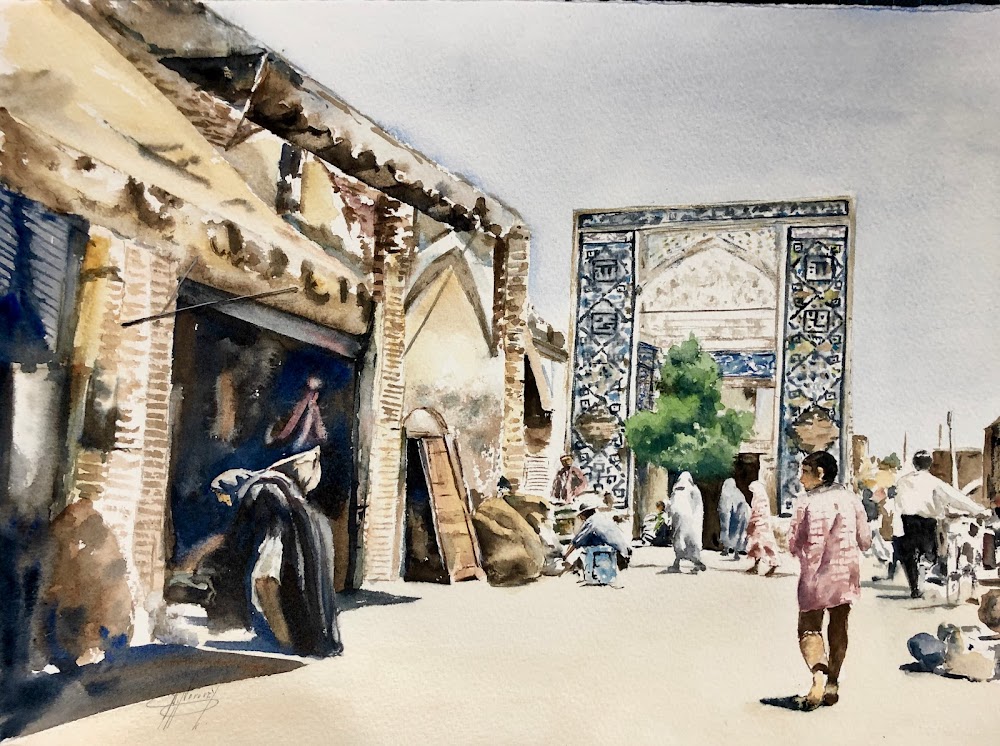Ganjali Khan Complex (مجموعه گنجعلی خان)
Overview
The Ganjali Khan Mosque is a stunning centerpiece of the larger Ganjali Khan Complex, located in the heart of Kerman, Iran. Constructed in the 17th century during the illustrious Safavid dynasty, this complex exemplifies the pinnacle of Persian architecture and urban planning. Commissioned by Ganjali Khan, a governor appointed by Shah Abbas I, this grand project was designed to enhance the city's infrastructure and public services, reflecting a vision of communal prosperity.
The Ganjali Khan Complex encompasses a diverse array of structures, including a caravanserai, a bathhouse, a school, a bustling market, and, of course, the mosque itself. Specifically designed for communal prayers, the mosque serves as a focal point for both spiritual activities and social gatherings. Built between 1596 and 1621 under the masterful guidance of architect Master Sultan Muhammad, the mosque stands as a testament to the artistic and architectural prowess of its time.
One of the mosque's most striking features is its intricate tile work. Adorned with stunning floral patterns and elegant calligraphy, the predominantly blue tiles beautifully contrast with the beige brickwork of the structure. Inside, the main prayer hall houses a mihrab—a semi-circular niche indicating the direction of Mecca—decorated with exquisite mosaic tiles and inspiring Quranic inscriptions, establishing it as a spiritual centerpiece of the mosque.
The mosque's dome is another remarkable highlight, crafted with meticulous attention to detail. Its geometric and floral motifs symbolize the infinite nature of the universe and the unity of creation. The dome rests on a tall drum with windows that flood the interior with natural light, creating an ethereal atmosphere that enhances the worship experience.
Additionally, the mosque features elegant minarets, which not only serve as landmarks for the faithful but also functioned as towers from which the call to prayer (adhan) was announced. These slender structures boast detailed brickwork that harmonizes with the overall aesthetic of the mosque, adding to its grandeur.
The courtyard, bordered by arcades, plays a crucial role in the mosque's design. This open space accommodates large gatherings, especially during significant religious occasions. At its center lies a tranquil pool, historically used for ablution before prayers. The reflective surface of the pool enhances the serenity and beauty of the courtyard, creating a peaceful environment for worshippers.
Each component of the Ganjali Khan Mosque and the complex was thoughtfully planned to serve multiple functions, aligning with Ganjali Khan's vision of an integrated urban center. The caravanserai welcomed travelers and traders, fostering commerce and cultural exchange. The lively market provided essential goods to locals while nurturing a strong sense of community.
Moreover, the bathhouse within the complex stands as a marvel of Persian architecture, offering a space for cleanliness and relaxation. Its beautiful wall paintings and efficient design for heat and water circulation exemplify the sophistication of the era. The school also played a vital role, serving as an educational institution where scholars imparted knowledge across various subjects, contributing significantly to the intellectual growth of Kerman.
In conclusion, the Ganjali Khan Mosque and the entire complex are enduring symbols of Kerman's rich cultural and architectural heritage. The collaborative efforts of architects, craftsmen, and laborers brought Ganjali Khan's grand vision to life, and today, visitors are continually awestruck by the beauty and historical significance that permeate every corner of this remarkable site.








